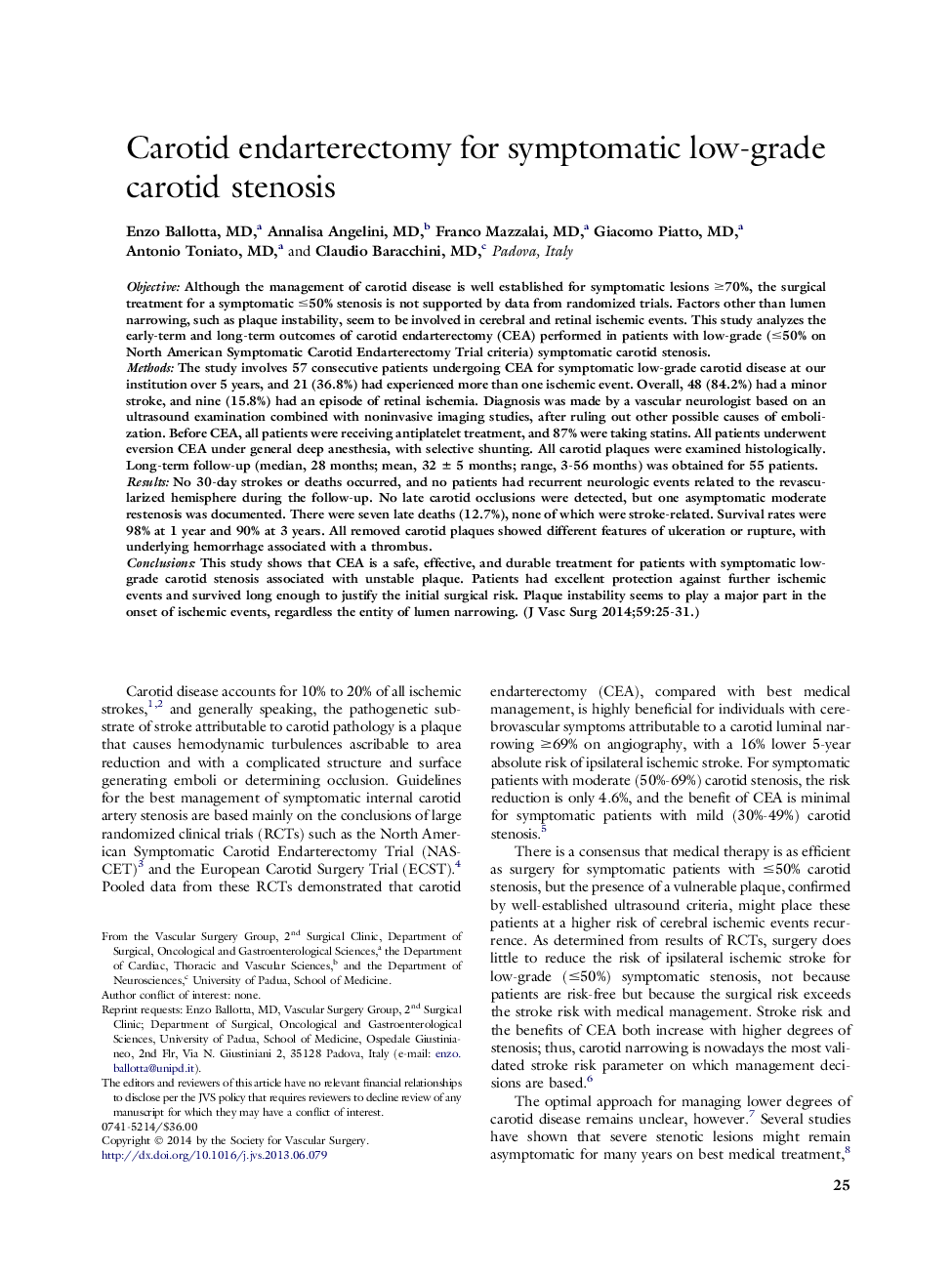| Article ID | Journal | Published Year | Pages | File Type |
|---|---|---|---|---|
| 5994829 | Journal of Vascular Surgery | 2014 | 7 Pages |
ObjectiveAlthough the management of carotid disease is well established for symptomatic lesions â¥70%, the surgical treatment for a symptomatic â¤50% stenosis is not supported by data from randomized trials. Factors other than lumen narrowing, such as plaque instability, seem to be involved in cerebral and retinal ischemic events. This study analyzes the early-term and long-term outcomes of carotid endarterectomy (CEA) performed in patients with low-grade (â¤50% on North American Symptomatic Carotid Endarterectomy Trial criteria) symptomatic carotid stenosis.MethodsThe study involves 57 consecutive patients undergoing CEA for symptomatic low-grade carotid disease at our institution over 5 years, and 21 (36.8%) had experienced more than one ischemic event. Overall, 48 (84.2%) had a minor stroke, and nine (15.8%) had an episode of retinal ischemia. Diagnosis was made by a vascular neurologist based on an ultrasound examination combined with noninvasive imaging studies, after ruling out other possible causes of embolization. Before CEA, all patients were receiving antiplatelet treatment, and 87% were taking statins. All patients underwent eversion CEA under general deep anesthesia, with selective shunting. All carotid plaques were examined histologically. Long-term follow-up (median, 28 months; mean, 32 ± 5 months; range, 3-56 months) was obtained for 55 patients.ResultsNo 30-day strokes or deaths occurred, and no patients had recurrent neurologic events related to the revascularized hemisphere during the follow-up. No late carotid occlusions were detected, but one asymptomatic moderate restenosis was documented. There were seven late deaths (12.7%), none of which were stroke-related. Survival rates were 98% at 1 year and 90% at 3 years. All removed carotid plaques showed different features of ulceration or rupture, with underlying hemorrhage associated with a thrombus.ConclusionsThis study shows that CEA is a safe, effective, and durable treatment for patients with symptomatic low-grade carotid stenosis associated with unstable plaque. Patients had excellent protection against further ischemic events and survived long enough to justify the initial surgical risk. Plaque instability seems to play a major part in the onset of ischemic events, regardless the entity of lumen narrowing.
